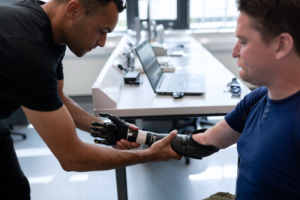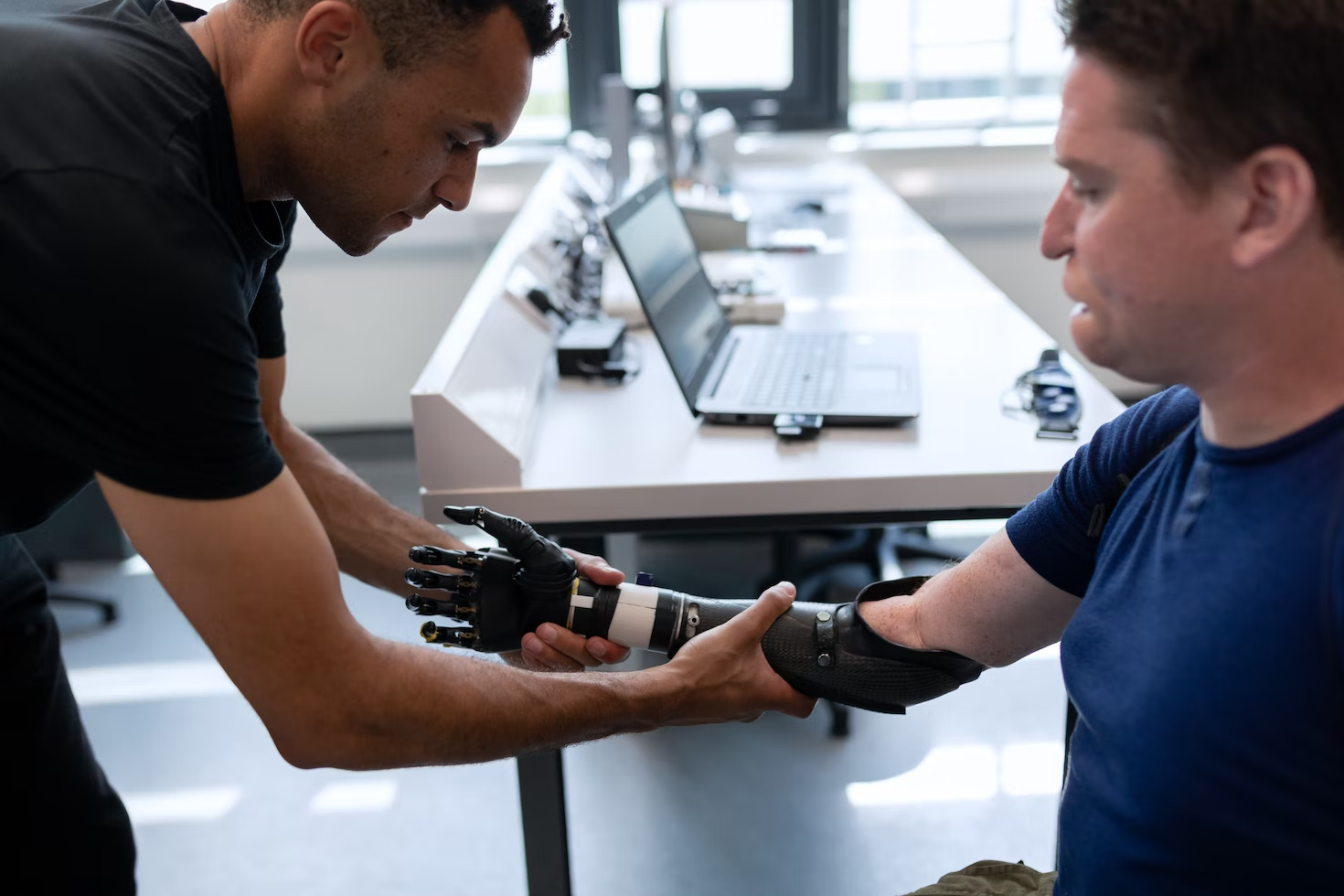
Physiotherapy and occupational therapy are very similar rehabilitative treatment options. Both focus on a particular goal; improve a patient’s quality of life after injuries or accidents that scar them physically and cognitively.
These two programs are very distinct in the approach used to get patients well again. Though they might be slight, there are still evident differences between both areas.
This piece will explore what Physiotherapy and occupational therapy are and their differences.
Physiotherapy
Physiotherapy is a rehabilitative care program that focuses on improving locomotive muscles associated with moving large body muscles.
These movements include sitting upright, walking, running, dancing, and other major body movements. Gross locomotive motions include hand-eye coordination like knitting, painting, and playing with balls (bouncing, throwing, and catching).
Physical therapy helps restore movement and functionality to the body of individuals affected by injuries, disabilities, or illnesses. Such complications include back pains, sports injuries, car crashes, strokes, heart attacks, and other events that affect balance and motor functionality.
The main goal of physiotherapy is to get the patient as mobile and physically fit as possible. The patient’s lesion is usually analyzed with proper knowledge of the biomechanical field through exercise and play. The expected results of physiotherapy are bone and joint alignment and increased mobility.
Who is a physiotherapist?
A physiotherapist is a movement expert aiming to improve quality of life through exercise, adequate care, and patient education. They have in-depth knowledge of the human body’s musculoskeletal, cardiovascular, neuromuscular, and integumentary systems.
Physical therapists treat and care for patients from birth till old age. They examine a person and draft a proper treatment plan to improve their locomotive abilities and prevent disability and dependence on functionality.
What do physiotherapists do?
Physical therapists take three major approaches to treating patients; exercise, education, and manual therapy.
- Exercise
Movement and physical activity is the major treatment for physio-related ailments. Physiotherapists recommend working out routines that move the particular body part that needs attention. They are also activities involving complete body movement, like walking, that aim to recover from incidences that affect mobility.
Hydrotherapy is also essential to ease and support joints and muscles that have been altered to build resistance and strength. Support aids like crutches and walking sticks are recommended for mobility during recovery.
Physical therapists also give general educational tips for recovery and getting better. They can also be seen as risk managers. They do not just wait till the harm is done before they come in. Generally, they advise on proper posture, good eating habits, hydration, and maintaining a healthy weight.
Manual therapy
Activities like massages and chiropractic exercises improve blood circulation, relieve stiffness, and relax the mind. Massages are not only for body pains and sports injuries; it also improves sleep and drives out anxiety from the mind.
Some therapists use acupuncture (needle therapy), and ultrasounds to speed up healing and relieve pain.
Where can physiotherapists work?
Although physiotherapy is a very rare career, they are necessary for every institution, including hospitals, outpatient clinics, people’s homes, schools, sports and fitness facilities, workplaces, and nursing homes.
Occupational Therapy.
While the former builds gross motor skills, occupational therapy focuses on fine motor skills. These involve the movement of smaller muscles in the body. Fine motor skills are used to perform daily activities like brushing teeth and getting dressed.
The need for occupational therapy is derived from physical or mental disabilities and injuries. It treats conditions like Arthritis, brain injury, cancer, and diabetes. ADHD and birth defects.
OT helps patients adapt to their conditions to the extent they can associate with others. It involves activities that enhance cognitive, visual, and coordination skills.
What do occupational therapists do?
An occupational therapist has the sole aim of helping patients to recover, improve and maintain skills required for day-to-day activities. The patient is indulged in daily therapy sessions to make the routine part of them.
Things will no longer be the same for the patient so the occupational therapist tries to alter the activity, the process of the activity, or the environment where the activity happens.
There is a connection between the body and the mind; hence, they also try to milden the post-mental stress of whatever event led to the patient’s condition.
There are three major skills required from an OT; communication, problem-solving, and patience.
- Communication is necessary to understand the patient and explain the treatment process. OTs will still be required to record treatment routines and processes and collaborate with other health practitioners.
- Problem-solving skills help the OT come up with the best routines for the patient. It is the necessary skill to alter the activity till it is suitable for the patient.
- Every medical personnel requires patience, but it is very important for OTs. Patients sometimes suffer mental issues from the events that caused their state, so when they carry out any activity related to such, they are likely to have episodes. Some patients may respond to treatment slower than others.
Approaches of OTs in their treatment routines
- Assessing patients’ conditions and needs
- Creating proper treatment routines for different patients
- Documenting treatment and patients’ response to treatment
- Training patients and caregivers on the use of special assistive devices.
Where can occupational therapists work?
Most occupational therapists work in hospitals. They can also be found in schools (for children with special needs), nursing homes, elderly homes, and health service centres.
Differences between physiotherapy and occupational therapy
Physical therapy and occupational therapy are often mistaken for one another. They both are rehabilitative care treatments and also treatments for the muscles.
| Physiotherapy | Occupational therapy |
| focuses on improving gross motor skills | focused on improving gross fine motor skills. |
| It can be a preventive measure | used as a curative treatment |
| used for the restoration of mobility | used for the restoration of physical independence. |
Physical therapists are not only involved in treatments, but they help patients avoid such events. They are advisors on healthy living. However, occupational therapists use manual therapies for their patients; rather, they alter the activity or environment and recommend assistive devices to help with daily activities.
Physical therapists and Occupational therapists work together.
Some believe that physiotherapy is a redundancy of occupational therapy and vice versa. However, physical therapists, most times, work hand in hand to recover patients where necessary. For example, a patient who needs to walk again will require attention from both fields of the rehabilitation process. The physical therapist aims at restoring movement to such an individual. They focus on mobility, balance, and muscle strengthening, while occupational therapists teach the patient how to carry out daily activities like putting on shoes, kicking balls, and other activities.
Stroke is an area that brings physiotherapists and occupational therapists together. In this situation, the blood supply to the brain is blocked, resulting in brain damage. During recovery, the brain must relearn patterns and processes of carrying out basic activities. Physiotherapists and OTs work together to restore body control and get patients to complete tasks independently.
A physical therapist, in this instance, tries to get the patient to move, improve balance, and regain strength after the stroke. On the other hand, the occupational therapist coaches the patient on new adaptive methods, like using sliding boards as toilet and bedside aids.
Don’t be shocked if you require both physical and occupational therapy as part of your care if you require hospitalization due to an illness, injury, or surgery. They both support recovery and offer balanced healing. These are crucial for developing the knowledge and abilities required to complete daily tasks with the utmost competence, effectiveness, and independence.

